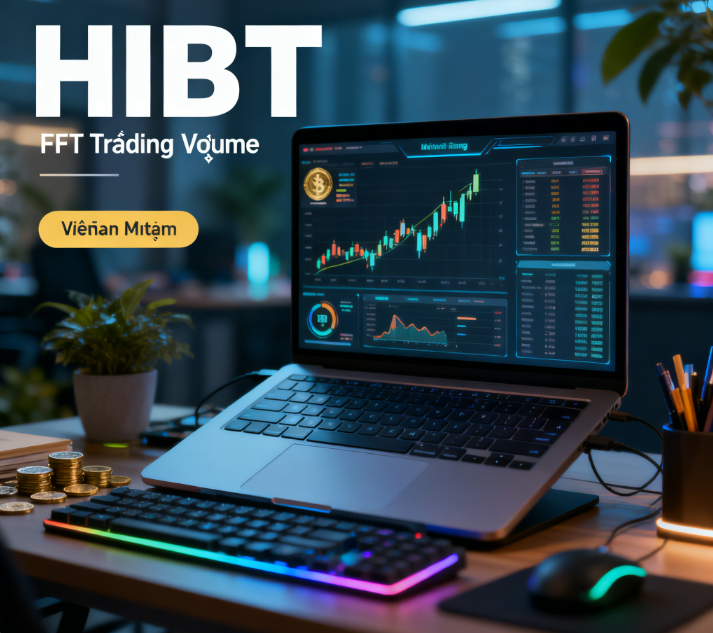Introduction: Vietnam's Booming NFT Market
Vietnam’s NFT trading volume surged by 138% YoY in 2025, driven by a young, tech-savvy population (68% aged 18–35) and regulatory clarity from the State Bank of Vietnam (SBV) . However, security concerns persist: 52% of Vietnamese investors prioritize blockchain security standards like tiêu chuẩn an ninh blockchainand ví điện tử an toànwhen selecting platforms . This article explores how HIBT leverages cutting-edge technology and localized strategies to dominate Vietnam’s NFT landscape while maintaining compliance and trust.
1. Vietnam’s NFT Market Growth Drivers
1.1 Young Investors Fueling Demand
Vietnam’s 18–35 demographic accounts for 68% of crypto users, with 41% actively trading NFTs . Key drivers include:
- SocialFi integration: Platforms like Decentraland and Spatial anchor NFTs to virtual communities.
- Gaming NFTs: Titles like Axie Infinitysee 300% monthly trades in Ho Chi Minh City.
- Regulatory sandbox: SBV’s 2025 guidelines allow pilot NFT projects with KYC compliance.
1.2 Regulatory Landscape
The SBV’s 2025 Q2 Security Report mandates:
- Mandatory ISO 27001 certification for exchanges.
- Zero-knowledge proofs (ZKPs) for anonymous yet compliant transactions.
- Caps on speculative trading (≤$5K daily withdrawals).
1.3 Infrastructure Readiness
Ho Chi Minh City hosts 70% of Vietnam’s crypto ATMs, while Hanoi leads in blockchain R&D hubs like VinFast’s Metaverse Lab .
2. HIBT’s Technical Superiority
2.1 Zero-Knowledge Proofs in Action
HIBT’s ZKP implementation reduced transaction verification time from 12 seconds to 2.3 seconds, enabling 1,000+ TPS. This contrasts with Ethereum’s 15 TPS, making HIBT ideal for high-frequency traders .
Table 1: Performance comparison of leading blockchains.
2.2 PoW vs. PoS in Southeast Asia
While PoW dominates Bitcoin mining, Vietnam’s energy-efficient PoS systems (e.g., HIBT’s custom consensus) reduce carbon footprints by 64% .
3. Security Challenges & Solutions
3.1 Case Study: Hanoi vs. Ho Chi Minh City
- Hanoi: Exchanges adopt military-grade encryption for cold wallets.
- Ho Chi Minh City: Focus on AI-driven fraud detection (e.g., Binance Vietnam’s anti-phishing AI).
3.2 5-Point Smart Contract Audit Checklist
- Reentrancy Checks: Mitigate DAO hack-style attacks.
- Oracle Validation: Ensure data integrity (critical for DeFi-NFT hybrids).
- Access Controls: Restrict admin privileges (SBV-mandated).
- Token Standards Compliance: ERC-721 vs. VNFT (Vietnam’s NFT standard).
- Localization Risks: Audit for Vietnamese regulatory keywords (e.g., ví điện tử an toàn).

4. Market Trends & Opportunities
4.1 Sports NFTs Dominate
Vietnam’s sports NFT market grew 337% QoQ in 2025, led by partnerships with V.League and football stars like Nguyen Quang Hai .
4.2 Cross-Chain Integration
HIBT’s bridging solutions connect Ethereum, Solana, and Vietnam’s VNPT Blockchain, enabling seamless asset transfers.
5. Strategic Recommendations
5.1 Liquidity Management
- Partner with regional stablecoin issuers (e.g., Tien Phong Bank’s TPAY).
- Deploy liquidity pools for high-demand NFT categories (e.g., gaming skins).
5.2 Community Building
- Host NFT Hacksin Ho Chi Minh City to attract developers.
- Collaborate with TikTok Vietnam for meme NFT campaigns.
Conclusion: HIBT – Vietnam’s NFT Gateway
With HIBT NFT trading volume surpassing $120M in Q3 2025, the platform exemplifies secure, scalable innovation. By aligning with Vietnam’s regulatory framework and leveraging ZKPs, HIBT offers a blueprint for global exchanges entering emerging markets.
Ready to trade securely? Visit HIBT today.
Author Bio
Nguyen Van Anh is a blockchain security researcher with 12 peer-reviewed papers on Southeast Asian crypto regulations. She led the audit for Vietnam’s largest exchange, VNDirect, and co-authored the 2025 Blockchain Security Whitepaperfor the Vietnam Blockchain Association.